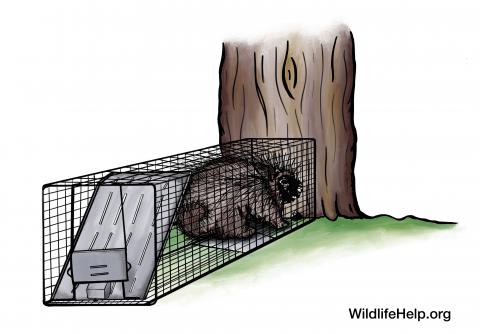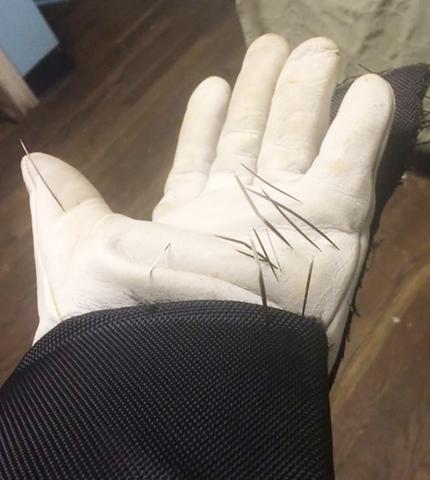Find help...
How to live trap and remove a problem porcupine in Maryland | Porcupine
Maryland > Animal is gnawing bark and clipping twigs from trees and shrubs > Porcupine
How to live trap and remove a problem porcupine
Step 1
You can live trap a porcupine using a wire cage trap or wooden box trap with minimum dimensions of 10-inches x 12-inches x 32-inches. Set the trap at the base of a large tree near the damage site.
Note that you may encounter a mother and baby porcupine together any time of year. Porcupine young may nurse for up to four months, and while some may disperse as early as five months. Others may remain with their mother for an entire year.
Porcupines seek out salt to fill natural deficiencies in their diet. If you are attempting to trap a porcupine, try setting a trap with a salty bait.
Some bait options include:
- Saltwater soaked wood or leather
- Veggie scraps such as pumpkin, carrot, or turnip
- Salt mixed with cooking oil
Make sure to check the trap at least twice per day, and more frequently if possible.
- A trapped animal typically becomes stressed very quickly.
- They quickly become weak and dehydrated without food or water.
- If outdoors, the animal may be exposed to extreme heat or cold, and weather
- Try to set outdoor traps on days with mild weather, and set a wooden board on top of the trap to prevent excess heat exposure. The board will also offer some protection from the rain should the weather turn.
Remember that while you may be setting a trap for a porcupine, you may, in fact, trap other animals as well. Use caution in releasing any accidental-catches. If the wild animal you catch appears sick or injured, call your local wildlife department, a veterinarian, or wildlife rehabilitator to advise.
Additionally, before releasing a captured porcupine, call your local wildlife department to see if you are allowed to translocate. Otherwise, release on a property and make the proper changes, like creating exclusions around sheds and decks to prevent the porcupine from returning.
Remember that relocating a porcupine beyond the area it was found may not be legal in your area. Check local regulations before attempting this.
Step 2
Before you try to trap a porcupine, take proper precautions. Porcupine quills are sharp, and professionals often wear thick kevlar gloves while handling porcupines, even if the porcupines are injured or ill. Do not try to handle porcupines.
If you or your pet get stuck with quills, call your doctor or veterinarian. While it is rare, porcupines can contract rabies, so report any bites or scratches immediately.
Laws and regulations to be aware of
Regulations for Maryland
|
|
While we attempt to provide guidance about state and federal regulations pertaining to specific species and control techniques, we do not provide information about local jurisdictions (city, town, county, etc.) where regulations may be more restrictive, especially as it applies to discharge of firearms, transport of animals or use of trapping equipment. Contact your local city or county government to inquire further. No guarantee is made that information (or lack of information) associated with a species or control technique is completely accurate or current. You should become familiar with federal, state and local laws before beginning any wildlife control activities. |
More solutions for porcupine problems


